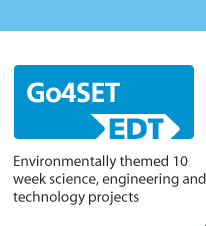Incorporating Technology in STEM Learning
In today's fast-paced digital era, incorporating technology in STEM (Science, Technology, Engineering, and Mathematics) learning has become increasingly important. This article explores the significance of integrating technology in STEM education and curriculum development, providing educators, teachers, and instructional designers with practical insights and strategies to effectively leverage technology for enhanced STEM learning experiences. For a detailed example, check out this synopsis of an article example from https://bestwritingservice.com/blog/how-to-write-a-synopsis.html that discusses successful case studies and best practices in implementing technology-driven STEM initiatives in schools.
Understanding the Role of Technology in STEM Learning
To fully grasp the potential of technology in STEM education, it is crucial to explore its various types, advantages, and challenges.
Exploring the different types of technology used in STEM education:
Dive into the wide range of technology tools and resources available for STEM learning. Discuss how digital simulations, virtual reality, coding platforms, robotics, and online collaboration tools can enhance student engagement, facilitate hands-on experiences, and foster inquiry-based learning.
Highlighting the advantages of technology integration in STEM learning:
Emphasize the benefits of incorporating technology in STEM education. From promoting active learning and problem-solving skills to facilitating personalized learning experiences and expanding access to resources, technology integration offers numerous advantages for both educators and students.
Discussing the potential challenges and how to overcome them:
Acknowledge the potential challenges that may arise when integrating technology in STEM learning, such as technological barriers, access issues, and the need for ongoing professional development. Provide practical strategies and solutions to overcome these challenges, such as leveraging existing infrastructure, collaborating with technology specialists, and incorporating training programs for educators.
Strategies for Incorporating Technology in STEM Learning
To effectively integrate technology in STEM learning, educators and curriculum developers should focus on selecting appropriate tools and seamlessly incorporating them into the curriculum and activities.
Selecting appropriate technology tools and resources:
Guide educators in selecting technology tools and resources that align with their educational goals, student needs, and available resources. Highlight the importance of considering factors such as age appropriateness, functionality, compatibility, and cost-effectiveness. Provide examples of popular and effective STEM technology tools and platforms.
Integrating technology seamlessly into STEM curriculum and activities:
Discuss strategies for integrating technology seamlessly into the STEM curriculum. Emphasize the importance of aligning technology use with learning objectives, designing engaging activities that leverage technology, and providing opportunities for hands-on exploration and experimentation. Encourage the use of project-based learning, collaborative problem-solving, and real-world applications to maximize the impact of technology integration.
Ensuring Effective Implementation and Assessment of Technology in STEM Learning
To ensure the successful implementation and assessment of technology in STEM learning, educators should focus on professional development, support, and effective assessment methods.
Providing professional development and support for educators:
Highlight the importance of ongoing professional development to enhance educators' technological proficiency and pedagogical skills. Discuss the value of workshops, training programs, and collaborative learning communities in empowering educators to leverage technology effectively in the classroom. Provide resources and platforms for educators to access further support and stay updated with the latest advancements.
Incorporating formative and summative assessments to evaluate technology-enhanced learning:
Explain the significance of assessing technology-enhanced STEM learning. Discuss the importance of incorporating both formative and summative assessments to monitor student progress, evaluate learning outcomes, and provide timely feedback. Explore assessment methods such as rubrics, project portfolios, online quizzes, and self-reflection activities that effectively measure students' understanding and application of STEM concepts.
Conclusion:
The integration of technology in STEM learning offers endless possibilities for engaging, interactive, and personalized learning experiences. By understanding the role of technology, selecting appropriate tools, seamlessly integrating technology into the curriculum, and ensuring effective implementation and assessment, educators can empower students to thrive in the digital age. Let us embrace the transformative power of technology and unlock the full potential of STEM education for the future generations.
|





